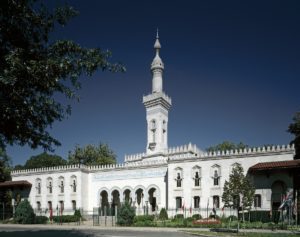May 4, 1984 The Political Travails of an Archaeological Exhibit
The Metropolitan Museum exhibit of art treasures from the Holy Land had been scheduled to open on May 4, 1984, at the Smithsonian Institution in Washington, D.C. Smithsonian Institution curator and archaeologist Gus Van Beek had already chosen the objects he wanted in the show.
Then the Smithsonian announced that 11 objects had to be removed from the list because they came from the Rockefeller Museum (now a part of the Israel Museum system), in East Jerusalem. Between 1948 and 1967, East Jerusalem had been under Jordanian control. The ownership of the items was disputed, the Smithsonian said, and it would not display them.
This objection, it was widely claimed, resulted from Arab pressure. Shortly before, Saudi Arabia had agreed to contribute $5 million for the Smithsonian’s Islamic Center, and more money was still needed. The then undersecretary of the Smithsonian was quoted as having conceded that “several of the Arab countries objected” to some of the pieces scheduled for the show. A reliable Smithsonian source confirmed to BAR at the time that the Smithsonian decision was taken to please its Arab patrons.
The Israelis responded by cancelling the Smithsonian show and soon thereafter New York’s Metropolitan Museum of Art offered to host a similar exhibit.
But even earlier, the show had been planned for the Metropolitan. In 1982, however, the Met itself had cancelled. The reasons given were the fear of terrorists and that some of the artifacts supposedly had been excavated on the West Bank. Some have suggested Arab pressure also motivated the Met, but this is far from clear—although Philippe de Montebello, the Met’s director, was quoted as saying “We don’t want to compromise our special and important relations with some of the neighboring [Arab] countries” where the Met conducts archaeological excavations.
In any event, a public outcry led by New York mayor Ed Koch (who pointedly noted that the city provided financial support to the Museum in excess of $10 million a year), led to a reversal of the Met’s decision, but by this time arrangements were already being made with the Smithsonian. No one then foresaw the brouhaha that would later lead to the cancellation of the Smithsonian show.
After the cancellation of the show at the Smithsonian, the Met welcomed back the Israeli exhibit, including the pieces from the Rockefeller. The show finally opened at the Met on September 25, 1986, more than four years after originally scheduled.
Source: Biblical Archaeology Review “Ancient Israelite Art Sparse in Impressive Show at Met,” (sidebar) by Hershel Shanks 12:06, Nov/Dec 1986.




